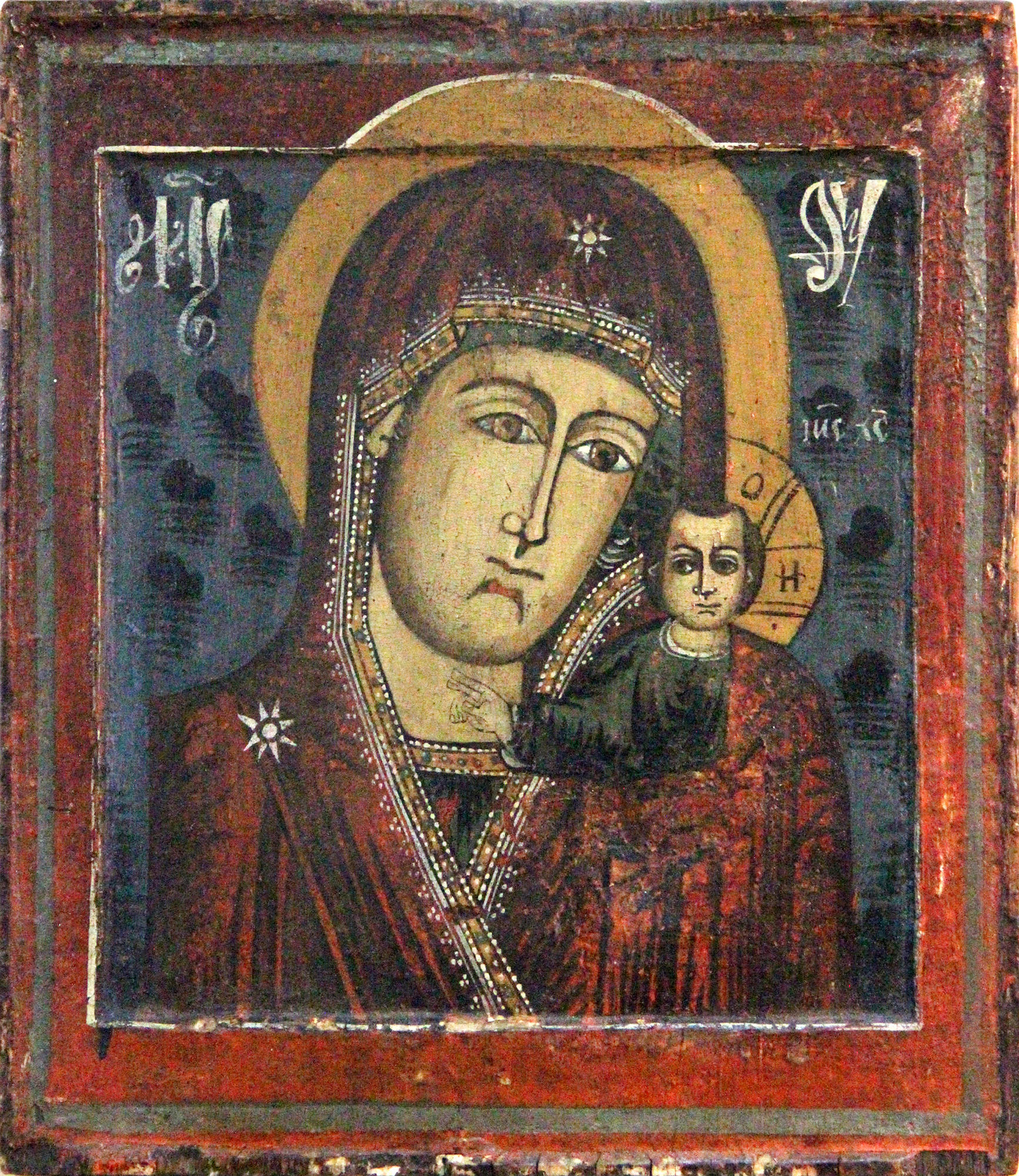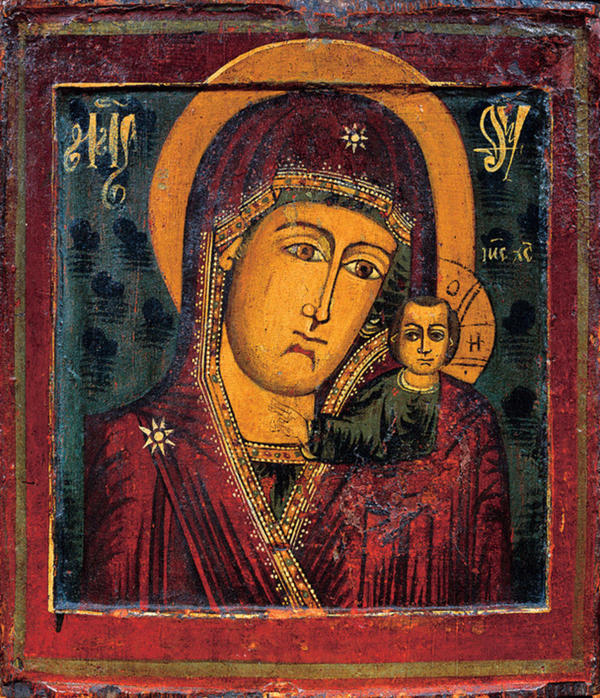This iconographic type of Hodigitria traces its origins to the ancient Christian Monastery of Hodegon in Constantinople. Here an icon was first found that depicted the Mother of God holding the Infant on her left arm — legend had it that the icon was painted by Apostle Luke. In Greek, ‘Hodigitria’ means ‘the One who Shows the Way’.
A copy of the icon was discovered on 21 July 1579 in the Khanate of Kazan, whose capital city had already been conquered by Ivan the Terrible. From the name of Kazan city, the icon received the last part of its title. It is unknown how the icon found its way to the Muslim lands. Researchers suggest that it was taken as a military trophy from Constantinople’s Church of St. Mary of Blachernae. The Russian Tzar ordered an Orthodox church to be builtin Kazan and copies of the icon made. Before long, copies of Our Lady of Kazan spread throughout Russia.
A copy of the icon was discovered on 21 July 1579 in the Khanate of Kazan, whose capital city had already been conquered by Ivan the Terrible. From the name of Kazan city, the icon received the last part of its title. It is unknown how the icon found its way to the Muslim lands. Researchers suggest that it was taken as a military trophy from Constantinople’s Church of St. Mary of Blachernae. The Russian Tzar ordered an Orthodox church to be builtin Kazan and copies of the icon made. Before long, copies of Our Lady of Kazan spread throughout Russia.



